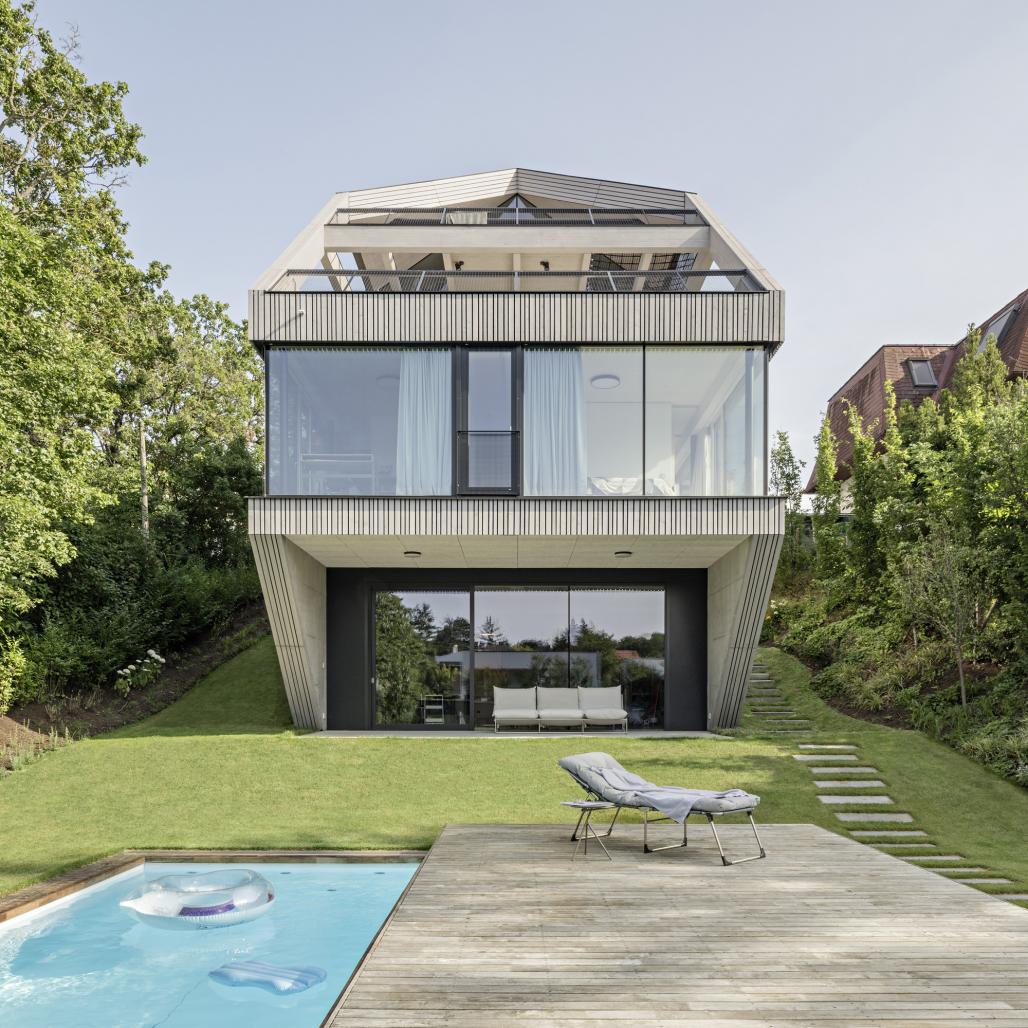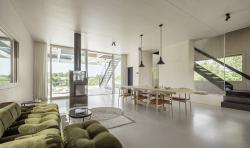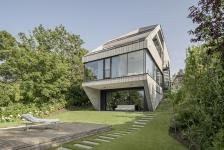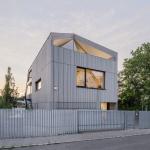To escape the hectic rush of Vienna's city center, a family of four wishes for a domicile in the countryside that will also house a spacious artist's studio. One finds the perfect sloping site. The nature of the property formally invites the stacking of the different living environments. As a result, the 3-meter-high artist's studio is created in the lower level, partly nestled against the slope, partly on the same level as the garden. The covered terrace is also used as an outdoor studio.
Above, at street level, you get to the parents' bedroom and the children's bedrooms of the two boys, along with the belonging bathrooms. The green of the crowns of the surrounding trees is everywhere within reach. On the same level, facing the street, there is also the entrance area and the garage with an inconspicuous garage door in the dressing of the facade.
The internal open staircase, pierced from the studio to the top floor, is accompanied by an open-glass elevator. On the upper floor lies the dining, kitchen and living area, which opens to the garden side to a large, partially covered terrace with views towards the Perchtoldsdorfer Heide. An exterior staircase leads directly to the garden with pool and guest house. Facing the street is the kitchen area, with hidden pantry kitchen and a breakfast bar.
The top floor, designed as a multimedia, study and music room, offers street- and garden-facing partially covered terraces. On the side facing the garden, there is a floor-level "hammock" instead of a railing to the lower terrace. Here, the view sweeps over the trees and beyond the vineyards all the way to Vienna. A reminiscence of the old attic apartment of the Viennese days. From here, too, an external staircase leads to the lower terrace and from there directly to the garden.
The vertically connected outdoor areas are designed like a kind of scaffolding made up of stairs, railings, openings and partial roofs and enable the residents to gradually and personally appropriate the outside world. It can be played with various add-ons, such as swings, trellis, screens or hammocks.
On the street side, the house is inspired by the neighboring houses with gable roofs typical of the area, but reinterprets the roof as a partially roofed outdoor space. There, the large single-family house appears discreet and blends in with the tectonics of the street fronts of the neighboring houses. Towards the garden, however, the house grows imposingly out of the slope and opens up to the landscape.
2020
2023
The basement, which is half underground, and the garage are made of reinforced concrete, the floors above are made of wood, wall and ceiling elements made of cross-laminated timber, combined with partially visible steel construction. The use of untreated wood as a building material, including for parts of the interior and the rear-ventilated, pre-grayed wooden facade, underlines the sustainable and efficient concept of the building. House Max is almost self-sufficient thanks to integrated PV elements on the entire roof (Sun Skin, Eternit with battery storage), deep drillings and a heat pump.
Caramel architects








